PHYS 273 Midterm Notes Lessons 1-7 PDF

| Title | PHYS 273 Midterm Notes Lessons 1-7 |
|---|---|
| Course | Energy and Environment |
| Institution | Concordia University |
| Pages | 61 |
| File Size | 1.1 MB |
| File Type | |
| Total Downloads | 113 |
| Total Views | 189 |
Summary
Lesson 1: Introduction to EnergyWork and Energy:Energy: ability to do workThis is somewhat of a circular definition however it is sufficient to explain many physicalsystems and make calculations and prediction about the natural world. It is one of the mostimportant concepts in physics.Work- the word...
Description
1
Lesson 1: Introduction to Energy Work and Energy: Energy: ability to do work This is somewhat of a circular definition however it is sufficient to explain many physical systems and make calculations and prediction about the natural world. It is one of the most important concepts in physics. Work
- the word work means many things in everyday life - We defined work as: the transfer of energy Work: transfer of energy (transferring energy from one thing to another) = Force (F) x Distance (D)
- Ex. If a guy pushes a box across the floor —> transferring energy into the box Work = Force x Distance —> the work done (or energy transferred) on the box is defined as the product of the force (amount of force) x the distance (the distance over which that force is applied) he pushed the box Types of Energy: 1) Potential Energy: is associated with the position of an object when some force is acting on it (a type of mechanical energy) Ex. Gravitational potential energy: the higher up an object is, the more gravitational potential energy it has 2 2) Kinetic Energy: energy an object has due to its motion (K = 1/2mv )
- Depends on the mass of the object and the velocity of the object
2
- Notice that the kinetic energy depends on the mass and on the square of the velocity - This is a type of energy called “mechanical energy” K= amount of kinetic energy m = amount of mass v = velocity of object * If the mass doubles the kinetic energy doubles * If you double the velocity of an object the kinetic energy goes up by a factor of 4 3) Chemical Energy: energy stored in certain chemicals or materials that can be released by chemical reactions Ex. Burning of wood, paper, coal, natural gas or oil releases chemically stored energy in the form of heat energy! Other examples: charged electric batteries (chemical reactions allows you to have electrical energy) , food in stomach (you’re making a chemical reaction that releases that energy in the food for you to use) 4) Thermal/Heat Energy: energy associated with random molecular motions within any substance Increases of heat energy contained in any substance result in a temperature increase, and, conversely, a decrease of heat energy produces a decrease of temperature
- Increase of thermal energy = increase in temperature and conversely a decrease in thermal energy = decrease in temperature 5) Electric Energy: energy that is stored by changes (positive/negative charges) in their electric fields (a type of potential energy) Nothing can be seen with the eye, but the energy is stored and can be released as other forms of energy
3 Ex. On a stormy day, there’s a charge separation between the ground and the clouds —> difference where there’s more negative on the clouds and more positive on the ground set up an electric energy which can then be transformed into other types of energy Ex. In storm clouds electrical energy is stored between the ground and clouds which acquire opposite charges 6) Electromagnetic Radiation: is in the form of a wave that carries energy
-
It can be visible or not (one small range/band of spectrum = visible)
Shorter waves = Gamma rays, X-rays, ultraviolet (invisible that carry energy) Longer waves = Infrared, Microwaves, Radar, TV/radio (invisible that carry energy) 2 7) Nuclear/Mass Energy: stored energy in some amount of mass (E=mc )
- Discovered by Einstein when he was developing his theory of special relativity when predicting that there is a correspondence between mass and energy —> mass is another form that energy can take (mass can be converted into energy and energy can be converted into mass)
- !This is the important principal in looking at the energy associated with nuclear reactions (where you have mass being turned into energy)
- EX. If you break a rock in half the two halves plus all the little pieces/dust will have the same mass as when the rock was whole HOWEVER in a nuclear reactions if you break a nucleus in half and then weight the two halves the mass will be less than if the nucleus was whole and that missing mass has turned into energy
- Einstein’s famous equation tells us how much energy is stored in some amount of mass - !c = 30,000km/second = 2.998 x 108 m/s - E = amount of mass energy - m = amount of mass - c = speed of light (30 000km/second)
4 Units of Energy: !
.
1) Joule (J): metric unity of energy where one metric unit of force (Newton) is acting through one metric unit of distance (metre) = J = N x m
The joule is the metric unit of energy. It has its fundamental definition in terms of force and distance. One metric unit of force (the newton) acting through one metric unit of distance (the metre) is equivalent to the expenditure of one joule of energy. .
2) British Thermal Unit (BTU): amount of heat energy required to raise temperature of 1 pound of water by 1 degree of Fahrenheit
We often encounter the British thermal unit (Btu) in discussions of fuel and insulation. The unit has a simple definition based on the amount of heat energy which must be given to a known amount of water to increase its temperature by a given amount. One Btu is defined to be the amount of heat required to raise the temperature of one pound of water by one degree Fahrenheit. 3) Calorie (C): amount of energy required to raise the temperature of 1 gram of water by 1 degree Celsius or the amount of energy given off when 1 gram of water cools by 1 degree Celsius The calorie, like the Btu, is also defined in terms of the heating of water. It is the amount of energy required to raise the temperature of one gram of water by one degree Celsius, or the amount of energy given off when one gram of water cools by one degree Celsius. *NOTE: In North America, when you see the amount of energy stored in food as “calories” —> this is actually kilocalories (1000) by the above definition .
4) Foot-pound: no longer a common unit of energy !
.
5) Electron-Volt (eV): amount of energy an electron gains if accelerated by a 1-V electric potential
A favourite of particle physicists. This is a very small amount of energy which is useful when working with tiny charged particles (like electrons). It is the amount of energy an electron gains if accelerated by a 1-volt electric potential.
5 !
- Very small amount of energy which is useful when working with tiny charged particles like electrons
Lesson 2: Energy Transfer & Conservation of Energy Work and Energy in Physics
- The words “energy” and “work” mean different things in different contexts - In physics we are more specific about all our definitions Energy: ability to do work
Work: transfer of energy
This is somewhat of a circular definition however it is sufficient to explain many physical systems and make calculations and predictions bout the natural world. It is one of the most important concepts in physics.
Transfer of Energy: (aka energy transformation) the process of changing one form of energy to another Ex. Santa on a sled on top of a mountain sliding down to the bottom
- Top of the hill (with 0 kinetic energy) = high gravitational potential energy due to high altitude and no kinetic energy !
- Bottom of the hill = some kinetic energy gained due to some movement !
6
- Where did the kinetic energy come from? From the gravitational potential energy at the top he has more than he does on the bottom because gravitational potential energy depends on what altitude you’re at ! potential energy transformed into kinetic energy (amount of KE gained = amount of PE lost) Energy flow: used to keep track of the transfer of energy where one form of energy is transformed into another type of energy (there can be many energy transfers)
- Energy can be transformed from one type to another - In the previous example gravitational potential energy is turned into kinetic energy - In a situation we can track the transfer of energy from one type to another Ex. A simple energy flow: a girl starting from rest and pushes a box across the floor until she is moving quickly (0KE to some KE) Applied force: work on the box —> transformed/transferred into kinetic energy Ex. A complete energy flow: ! 1) Energy is produced from the sun (due to nuclear fusion in the sun) = nuclear energy 2) Energy is transported into the Earth in the form of electromagnetic energy (light) 3) Electromagnetic energy is converted into chemical energy via photosynthesis in a plant 4) Chemical energy is converted into a different form of chemical energy that can be absorbed by humans in the form of plants 5) The chemical energy absorbed by humans can be used to apply force onto a box 6) Work is done on the box which increases kinetic energy Transfer of Energy
7
- We will generally not consider the detailed mechanism for how energy is transferred from one type to another
- We will consider the flow of energy during different processes - The amount of detail included will depend on the situation considered and what we want to learn/consider Conservation of Energy Law of Conservation of Energy: the total energy of an isolated region or system CANNOT change
- !Isolated system = energy can neither enter nor escape the system (there should always be ! the same amount of energy)
- Same amount of energy does not mean that there is always the same TYPE of energy ! (total energy can transfer from one type to another)
- Total energy is conserved meaning it can be transferred from one form to another, but it CANNOT be destroyed nor created Careful: this is not the same thing as “conserving energy” in the context of things like turning off lights or insulating your house in order to reduce energy use Ex. A lightbulb is attached to a battery in a perfectly insulated opaque box (no heat or light can get out) ! Energy flow: chemical energy (inside the battery) —> electrical energy (potential difference/voltage across battery) —> thermal energy (current through the wire that heats up the lightbulb) —> electromagnetic energy (both visible and non-visible light: infrared) !
- Where does the energy go? A decrease in chemical energy results in an exact increase in both thermal and electromagnetic energy = conservation of energy (NO ENERGY CAN GET OUT) Ex. Same example as above but the lid of the box is taken off
8 Energy flow: chemical —> electrical —> thermal —> electromagnetic
- Where does the energy go? A decrease in chemical energy results in an increase in both thermal and electromagnetic energy BUT no conservation of energy because some light/heat has left the box since it wasn’t an isolated system (loss of energy) It doesn’t mean the law of conservation is wrong here it just means it doesn’t apply here * note that in both examples there was no energy “disappearing’ * In a closed system, energy is conserved, if it is not closed, energy is escaping or entering the system * The only true closed system is the entire universe (but we can come close) Power: the rate at which energy is consumed or produced (amount of energy per time) Metric unit is watts (W) which is joules per second (s) Ex: 60 watt lightbulb —> that means that every second 60 joules of energy come out of this 60 watt lightbulb
- Power = Energy (J)/time(s) ! - Measures how fast work gets done ! - Metric unit = Watts (W) = 1J/s ! Ex. Appliances that heat up tend to be highest power appliances in your house. A hairdryer is approximately 1500W. How much energy is used by a hairdryer in 5 mins? ! 1500W = 1500J/s P = E/t! 1500J/s = E/300s!
5 mins = 5x60 = 300s !
9 E = 450,000J = 450kJ !
How does that compare to a 20W TV? A hairdryer uses 75x more energy E= 20J/s x 300s = 6000J = 6kJ ! Ex. Imagine a motorcycle accelerates from a stop sign to a speed of 50km/hr. There is power being produced and power being consumed. Explain in terms of energy increase and decrease ! Power produced in engine = a decrease in chemical energy (fuel of motorcycle/gas) Power consumed = increase in kinetic energy (motorcycle and rider) power consumed = thermal energy is the engine, the motorcycle and air around it is !
Lesson 3: Thermodynamics, Heat, Engines & Power Generations ! Laws of Thermodynamics: ! First Law of Thermodynamics: the change in internal energy of a system equals the net heat transfer into the system minus the net work done by the system. States that energy can neither be created nor destroyed; energy can only be transferred or changed from one form to another The change of energy of that system = the amount of energy coming in (heat is adding energy to this system) - the amount of energy coming out (if heat is the energy input int0 your system that increases the energy of the system) ! Second Law of Thermodynamics: it deals with the direction taken by spontaneous processes. Many processes occur spontaneously in one direction sonly — that is, they are
10 irreversible. States that the changes in entropy in the universe can never be negative (irreversible) and that heat always flows from hot objects to cold objects ! Ex. A hot piece and a cold piece of metals are stuck together which causes heat transfer from the hot piece into the cold piece until eventually they are the same temperature (total amount of energy is the same) However if I took two pieces of metals that are the same temperature and stuck them together I wouldn’t spontaneously get one getting hot and the other getting cold even though this wouldn’t go against the law of conservation of energy, it wouldn’t go against the first law of thermodynamics ! Ex. A compressed bottle of air and you shoot some air out of the bottle distributing air in a uniform manner (won’t see spontaneously air compressing itself into a bottle therefore not irreversible only in one direction) Heat (or energy) transfer occurs spontaneously from higher to lower temperature bodies, but never in reverse Entropy: is a measure of the disorder (or randomness) of a system. Everything in the universe eventually moves from an ordered state to random state and entropy is the measurement of that change
- Less order = more randomness = higher entropy - More order = less randomness = lower entropy! Another way of saying the Second law of Thermodynamics —> in an isolated system the entropy of the system increases over time
- The total entropy of a system CANNOT be negative (cannot decrease)! Ex. Diffusion by dropping sugar cubes inside a glass of water —> over time, the sugar cubes dissolve and sugar distributes into the solution/system
11
- Some amount of entropy before and after what we see is when we have the sugar cubes in its cube form and the water —> that’s more order than when I have the sugar dissolved throughout the water So what? Since the total entropy of a system can not decrease, this limits the amount of useful energy available - initially the system is more ordered, energy stored in the battery and cool box - later, there is less energy in the battery and there is more thermal energy (random motion of molecules) in the box - we can’t put the energy back into the battery - the total energy of the system is the same, but there is less useful energy Ex. Energy is stored in a battery inside a cool box where the system is well ordered but as the energy inside the battery starts to decrease, there’s more thermal energy (random motion of molecules) inside the box —> the total energy of the system remains the same BUT there is less useful energy inside the box and this is an irreversible change since we cannot put energy back into the battery Heat Engines: the idea of taking thermal energy (heat) and converting it into mechanical energy Mechanical Equivalent of Heat: burning a match —> release of thermal energy
- The heat energy released from burning a single match is about the same amount of energy required to lift a pint of beer up to the top of the tallest building in Montreal
- This heat energy must be captured and converted into mechanical energy Something we do often: Fossil fuels —> used for direct heat and light OR used for heat engines !
- Heat engines can use fossil fuels and convert them into mechanical energy to either produce electrical energy OR use it for transportation or for the industry
12 Energy Content of Fuel: burning hydrocarbons releases heat energy through 2 chemical reactions, which leaves us with water, carbon dioxide and thermal energy: C + O2 CO2 + thermal energy H2 + O H2O + thermal energy Ex. Burning heptane: C7H16 + 11O2 —> 7CO2 + 8H2O + 1.2 million calories/100g of C7H16 (heat of combustion) Heat Engine: any device that can take energy from a warm source and convert a fraction of this heat source into mechanical energy
- It relies on a temperature difference between the heat source (hot) and a heat sink (cold)
- The efficiency of a heat engine tells us how much of the input heat energy is turned into useful mechanical energy (since not all of input energy can be turned into mech energy due to nd 2 law of thermodynamics) Ex. For every 1000J of energy put into the heat source, 50J is converted into mech energy Efficiency = (work done/energy put into system) x 100% = (50/1000) x 100% = 5%
13
- Nicolas Leonard Sadi Carnot (French physicist) proved that the best efficiency possible by heat engine is: [1 – (Tcold/Thot)] x 100% *NOTE: temperature used must be in Kalvin (1K = -273C) Ex. Typical temperatures in a coal firmed electric power plant might be 825K in the boiler (source) and use cold water-cooling tower (sink) at 300K. What is the efficiency that could ever be possible in this type of power plant? Ebest = [1- (Tcold/Thot)] x 100% = [1 – (300/825)] x 100% = 64% Generation of Electricity Faraday:
- After discovering that currents can produce magnetic fields, people experimented to see if magnetic fields can produce currents
- Faraday was trying to produce a current with a magnetic field BUT it was not working - A current was produced for a short time when the current producing magnetic field was switched on or off
- Faraday deduced that it could be the charging magnetic fields that were producing the currents and thus he did a series of experiments to investigate !
Experiments: .
1) Opening/closing switches —> created a momentary current !
.
2) Pushing the coil into the magnetic field or pulling it out —> created a momentary current !
14 .
3) Pushing a bar magnet into the coil or pulling it out —> created a momentary current !
Faraday’s Law of Induction: states how changing magnetic fields through a wire coil results in an electrical current through that coil (induction)
- Electrical generator: process of electrical induction can transform mechanical energy into electrical energy
- By turning the wire loop (which takes mechanical energy), the magnetic fields passing through the loop changes which generates a current (electrical energy)
- Most of the electricity we use is from a conversion of mechanical energy to electrical energy using a generator !
- The mechanical energy can come from many sources: fossil fuel burning, wind or water ! Lesson 4: Energy and the Earth !
Energy Consumption !
Energy Consumption per Capita: the amount of energy used per person within a country !
- Varies from country to country since wealthier countries use more energy per person - 20% of the world’s population live in highly developed countries and these countries account for 60% of the world’s energy use
Renewable & Non-Renewable Energy !
Renewable Energy: sources of energy that can easily be restored (can<...
Similar Free PDFs

PHYS 273 Midterm Notes Lessons 1-7
- 61 Pages
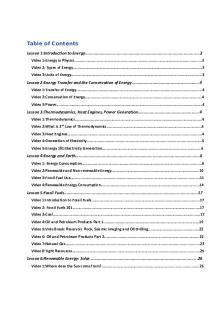
PHYS 273 FULL Notes
- 97 Pages

PHYS 273 Full Class Notes
- 80 Pages

Phys-273-Notes - Lecture notes 1-12
- 55 Pages
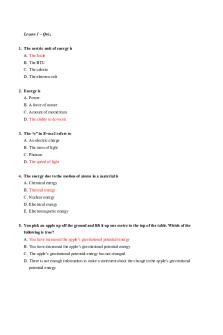
PHYS 273 NOTES INCLUDING test bank
- 50 Pages

PHYS 273 QUIZ Question BANK
- 9 Pages

Lessons 17-21 Notes ISYE 6501
- 8 Pages
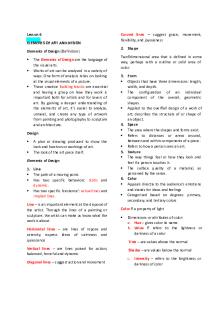
ART Appreciation Midterm Lessons
- 14 Pages

CB2402 midterm 17:18
- 10 Pages
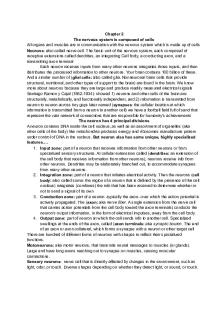
PSYC 273 Chapter 2 Notes
- 10 Pages

Phys 91173 electrcity notes
- 8 Pages

1189 BIOL 273 - course
- 14 Pages
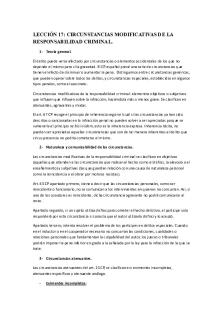
LecciÓn 17 - Lecture notes 17
- 6 Pages

Chapter 17 - Lecture notes 17
- 15 Pages
Popular Institutions
- Tinajero National High School - Annex
- Politeknik Caltex Riau
- Yokohama City University
- SGT University
- University of Al-Qadisiyah
- Divine Word College of Vigan
- Techniek College Rotterdam
- Universidade de Santiago
- Universiti Teknologi MARA Cawangan Johor Kampus Pasir Gudang
- Poltekkes Kemenkes Yogyakarta
- Baguio City National High School
- Colegio san marcos
- preparatoria uno
- Centro de Bachillerato Tecnológico Industrial y de Servicios No. 107
- Dalian Maritime University
- Quang Trung Secondary School
- Colegio Tecnológico en Informática
- Corporación Regional de Educación Superior
- Grupo CEDVA
- Dar Al Uloom University
- Centro de Estudios Preuniversitarios de la Universidad Nacional de Ingeniería
- 上智大学
- Aakash International School, Nuna Majara
- San Felipe Neri Catholic School
- Kang Chiao International School - New Taipei City
- Misamis Occidental National High School
- Institución Educativa Escuela Normal Juan Ladrilleros
- Kolehiyo ng Pantukan
- Batanes State College
- Instituto Continental
- Sekolah Menengah Kejuruan Kesehatan Kaltara (Tarakan)
- Colegio de La Inmaculada Concepcion - Cebu

